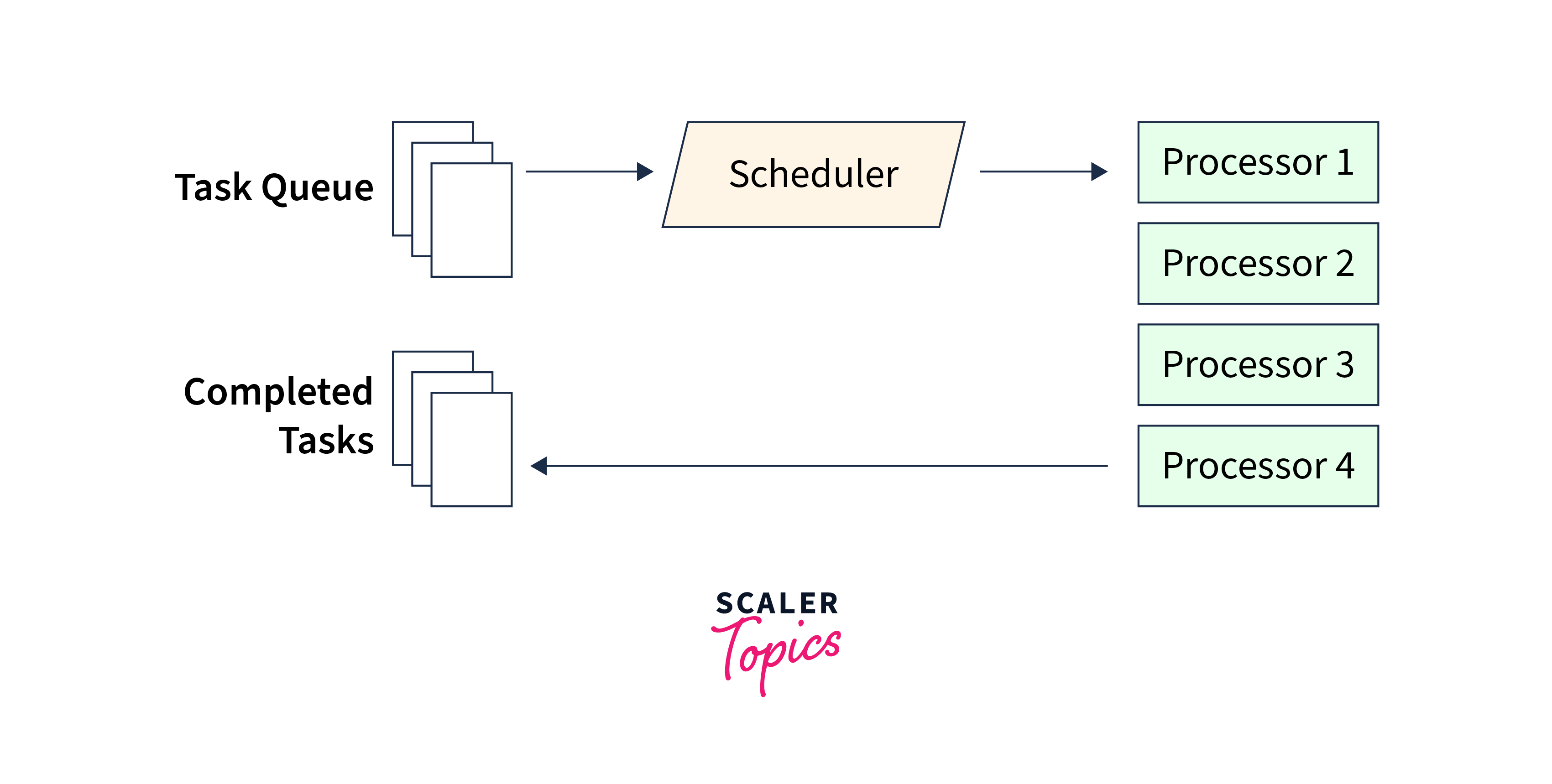Multiprocessing in Python

Overview
Python multiprocessing improves performance by running numerous processes at the same time, utilizing the full potential of current CPUs. In contrast to threading, Python's multiprocessing module uses a distinct memory area for each process to avoid conflicts. It's a very useful tool for parallelizing operations ranging from data processing to sophisticated computations. Python's multiprocessing makes the best use of multicore systems, increasing efficiency in resource-intensive applications. It speeds execution speed and increases overall program responsiveness by spreading tasks among processors. This built-in module enables Python developers to easily leverage the promise of parallel computing, enabling scalable and speedier solutions for computationally demanding tasks.
What is Multiprocessing?
Multiprocessing emerges as a major changer in programming, particularly in the Python ecosystem. At its core, multiprocessing is a technology that allows for the concurrent execution of several processes, which differs from typical sequential programming. This method makes use of the capability of current multi-core processors to improve computing efficiency.

The multiprocessing module in Python, a language known for its simplicity and readability, provides a solid framework for implementing parallelism. Multiprocessing, as opposed to threading, avoids Global Interpreter Lock (GIL) limitations, enabling each process to run independently.
In real-world scenarios, multiprocessing in Python proves invaluable for tasks that can be parallelized, such as data processing, image manipulation, and scientific simulations. For instance, when analyzing large datasets, multiprocessing enables concurrent execution of computations, significantly reducing processing time. Similarly, image processing tasks, like batch resizing or applying filters to multiple images concurrently, benefit from multiprocessing, enhancing overall performance and responsiveness in applications.
Why Multiprocessing?
Multiprocessing emerges as a potent tool in the dynamic world of Python, providing a turbo boost to programme performance. Consider your computer to be a bustling metropolis, and your Python program to be a skilled passenger attempting to negotiate the task traffic. Here, multiprocessing acts as a traffic controller, ensuring that several jobs are done concurrently.
Multiprocessing, as opposed to single-core processing, makes full use of current computers with many cores. Consider it a team of workers cooperating on many duties at the same time, rather than one individual juggling everything alone. This simultaneous execution of tasks results in considerable speedups, particularly when dealing with resource-intensive procedures such as data processing or sophisticated computations.
Basic Multiprocessing
Mastering fundamental multiprocessing opens the door to improved performance and efficiency in the dynamic world of Python. Multiprocessing allows your Python scripts to run many tasks at the same time, making use of today's multi-core machines.
Python provides the multiprocessing module for dipping your toes into multiprocessing. Consider it as a conductor conducting a symphony of chores. Each job or process runs separately, minimizing bottlenecks and maximizing your machine's power.
Setting the stage includes importing the module, establishing a Process object, and specifying the job within a function. The magic happens as these processes operate in parallel, efficiently exchanging data via inter-process communication.
Importantly, multiprocessing is a game changer for jobs that need simultaneous attention, such as web scraping, data processing, or scientific simulations. However, keep in mind that not all cases gain equally from multiprocessing, so pick your battles wisely.
Multi-Processing in Python Using Process Class
The Process class emerges as a powerhouse for implementing multiprocessing, an approach that enhances performance by simultaneously performing tasks, in the dynamic domain of Python programming. Consider it Python's approach of addressing numerous chores at once, similar to having multiple cooks making various meals in a busy restaurant.
The multiprocessing module's Process class allows you to launch separate Python processes, each with its own memory space. This separation guarantees that a problem in one process does not knock the entire program off balance. Consider it a team of professionals collaborating—each process has its emphasis, minimizing bottlenecks and increasing total efficiency.
With Process, creating parallelism. Within a class, you may designate a target function or even a method, and the Process class will handle the rest.
Furthermore, inter-process communication methods such as queues and pipelines promote communication between various processes. This enables them to share information and cooperate on complex tasks in real time.
Multi-Processing in Python using Pool Class
The Pool class emerges as a formidable ally for utilizing the potential of multi-processing in Python programming. Consider yourself presented with a difficult task, such as analyzing a huge dataset or conducting sophisticated computations. This is where the Pool class comes into play to rescue the day.
In simple terms, multi-processing is the simultaneous execution of numerous processes to improve performance and efficiency. This symphony of parallel execution is orchestrated by the Pool class, which is included under the multiprocessing package. It enables you to break your task into smaller, more manageable pieces, each of which is assigned to a distinct process inside the pool.
The Pool class abstracts away the practical details, allowing parallelization without going into the difficulties of threading or low-level process management. You can build a pool of worker processes, distribute tasks, and obtain results with a few lines of Python.
Python developers may unlock new levels of speed and efficiency in their applications by leveraging the power of multi-processing via the Pool class.
Multi-Processing in Python Using joblib
Joblib is a game-changer when it comes to parallel computing in Python. When it comes to parallel computing in Python, is a game changer. It smoothly distributes work over many processors using a simple and easy interface, making the most of your hardware resources.
How to Leverage joblib for Multi-Processing:
By wrapping up your function with the joblib's Parallel and delayed decorators, you effortlessly parallelize your code, speeding up computations and elevating your Python scripts to new heights of efficiency.
Conclusion
- Multi-processing allows operations to be executed concurrently by using the capabilities of many CPU cores. This improves performance and speeds up the execution of computationally complex activities.
- Python programs may achieve genuine parallelism by executing numerous processes simultaneously using multi-processing. This is especially useful for jobs that may be separated into discrete sub-tasks, allowing for the most effective use of available resources.
- Each process works in its memory region, ensuring isolation. Because faults in one process are less likely to affect others, this isolation improves the stability of Python programs. It's a solid method for developing resilient and fault-tolerant systems.
- The Global Interpreter Lock (GIL) can be a bottleneck for CPU-bound activities in Python. Multi-processing enables developers to avoid GIL by running different processes, alleviating GIL limits and allowing for better utilization of CPU resources.
- Multi-processing is an important method for dealing with big, resource-intensive workloads. Python programs may easily grow to meet the needs of complicated computations and data processing by dividing work over numerous processes.
- Multi-processing guarantees that one process does not obstruct the execution of others in applications that demand responsiveness, such as GUI-based programs or web servers. This responsiveness is critical when generating dynamic and engaging user experiences.
